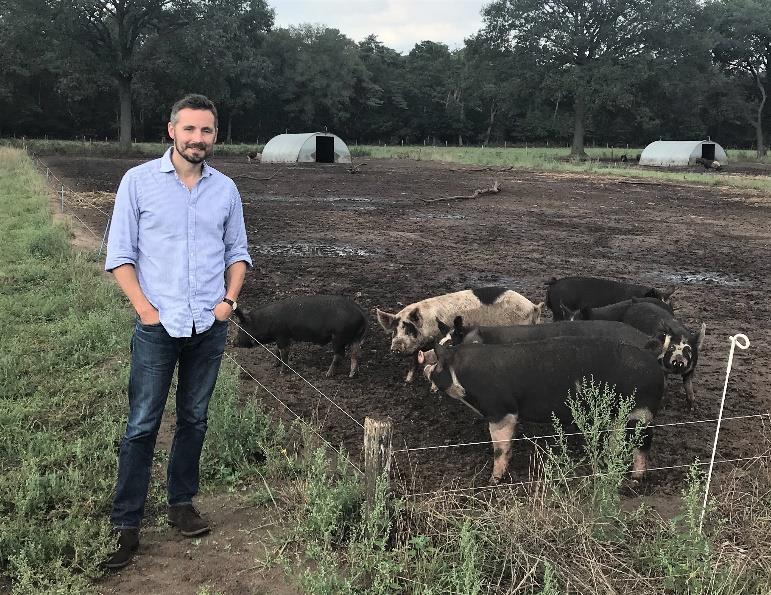Longley Farm estate manager Chris Harrap has published his Nuffield Farming report titled “We shape our buildings, thereafter they shape us” – an environmental psychology study of livestock buildings and how design affects humans, animals and the human-animal relationship.
“For farming to be sustainable long-term, our buildings will need to be good spaces for people, animals and socially acceptable to our fellow citizens,” explained Chris.
We should ensure our farms are well equipped to cater for the evolving circumstances in society and ensure they are focused on achieving the triple bottom line: People, Planet, Profit.”
Chris explored how the design of modern livestock buildings has changed and the impact this has on the well-being of farmers, their animals and the relationship between the two.
He explored how biophilic design principles could play a role in the design of agricultural buildings in the future.
“Where permanent housing is required, farming can learn from other construction sectors, who are finding ways to build much more visually attractive structures, which are positive spaces for people, using sustainable materials,” said Chris.
Looking towards natural shelter
For those turning to a lower input, more agroecological way of farming, Chris suggests looking to more natural shelter.
“Where possible, livestock should be reared with abundant, well-planned natural shelter such as trees and hedges.
This requires long-term planning, but plenty of grant funding is available and these features can also generate other incomes in the future.
“If additional man-made shelter is needed, portable structures are the next best option, providing shelter for animals as they are moved around land,” he added.
“Whatever we choose to build, for farming to be sustainable long-term, our buildings will need to be good spaces for people, animals and socially acceptable to our fellow citizens.
They also need to tread more gently on our environment, in the construction process itself and once operational.
“With engagement with other architecture and construction sectors, we can learn from those already leading the way and change our farms for the better,” he concluded.

